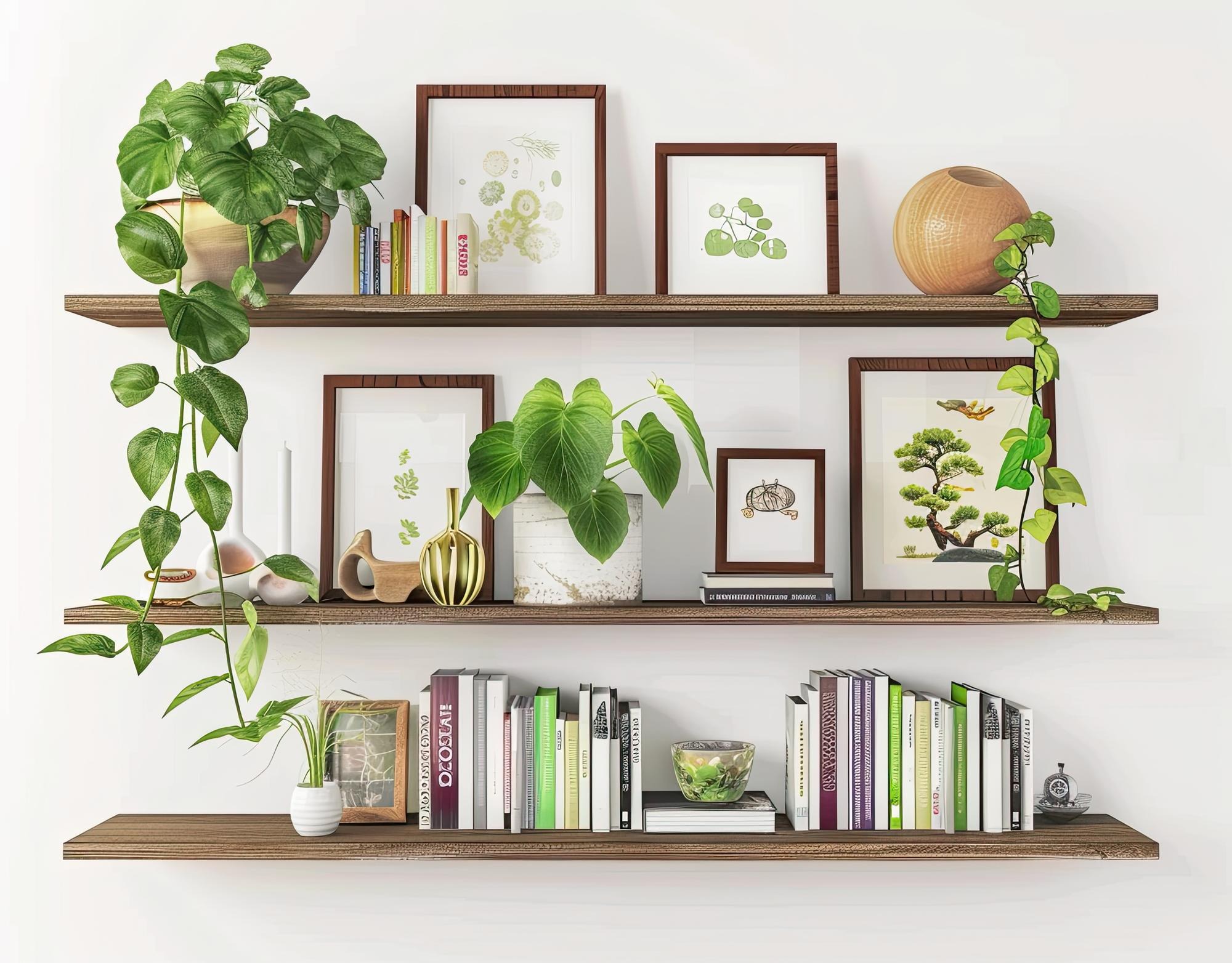Embrace the Monochrome Palette for Seamless Integration
Embracing a monochrome palette when integrating a dining table into a small living room is an excellent strategy for enhancing the space. By selecting a color palette that complements your existing decor, you can create a more expansive feel. This approach reduces visual clutter by using furniture in similar hues or materials.
For example, a sleek white dining set can blend seamlessly with light-colored walls and other furniture pieces. This not only helps maintain a cohesive look throughout the room but also establishes a subtle yet functional dining area. The uniformity of the color palette simplifies the space, drawing less attention to the boundaries between the dining and living areas, making the room appear larger and more inviting.
Maximize the Use of Natural Light
Maximizing the use of natural light in a small living space can dramatically transform how it feels and functions, especially when it comes to dining areas. Positioning your dining table near a window leverages natural light, which enhances the ambiance of the space and makes it feel more open and airy. This strategic placement allows sunlight to fill the room, creating a warm and inviting environment.
Choosing a low-profile table helps ensure that the sunlight is not obstructed, allowing maximum light to permeate the space. Such a setup not only brightens the room during the day, reducing the need for artificial lighting, but also offers a delightful spot for enjoying morning coffee with a picturesque view. Additionally, having your meals near the window can connect you more with the outdoors, providing a serene backdrop that enhances the dining experience. This approach not only optimizes light but also makes the space appear larger and more welcoming.
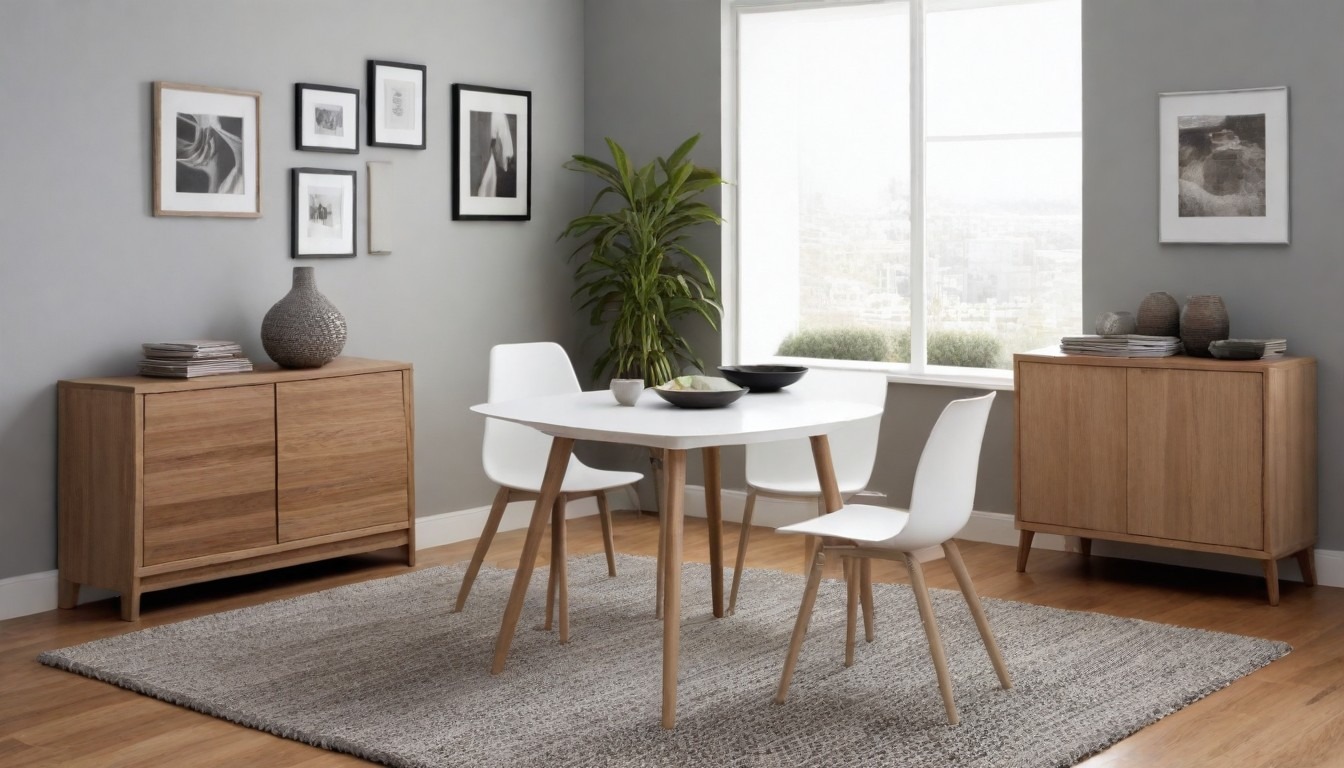
Create a Dual-Purpose Dining and Reading Nook
Creating a dual-purpose dining and reading nook in a compact space is an efficient and clever use of area, particularly in small living rooms or apartments. By placing a small dining table adjacent to a bookshelf, you encourage a multifunctional use of the space where one can both dine and enjoy reading.
To enhance the functionality and comfort of this nook, consider incorporating comfortable seating options, such as cushioned chairs or a small bench with pillows. This not only makes dining more enjoyable but also provides a cozy spot for prolonged reading sessions. Adjustable lighting is another essential feature; with the ability to adjust the intensity and direction of the light, you can create the perfect ambiance for both eating and reading. For reading, a focused, bright light is ideal, whereas softer, ambient lighting can create a relaxing atmosphere for meals.
This arrangement not only maximizes the utility of a small area but also adds a personal and inviting touch to your living space, making it a favorite spot for relaxation and enjoyment at any time of the day.
Add Softness with Textile Upgrades
Adding soft furnishings to your dining area can indeed transform it from a stark, functional space into a warm and inviting one. Draping plush textiles, such as sheepskin, over chairs is a fantastic way to achieve this. The softness of the sheepskin not only increases the comfort of the seating but also brings an element of luxury and coziness to the dining experience.
Beyond comfort, the addition of such textiles adds a rich layer of texture to the decor. This textural variety can break up the monotony of harder surfaces commonly found in dining areas, like wood or metal, and introduce a tactile dimension that enhances the overall aesthetic. Additionally, the visual softness of plush textiles can make the dining space appear more welcoming, encouraging people to linger and enjoy their time at the table.
These upgrades not only improve the physical comfort of the dining chairs but also contribute to a more visually and tactilely appealing dining environment, making every meal a more enjoyable and luxurious experience.
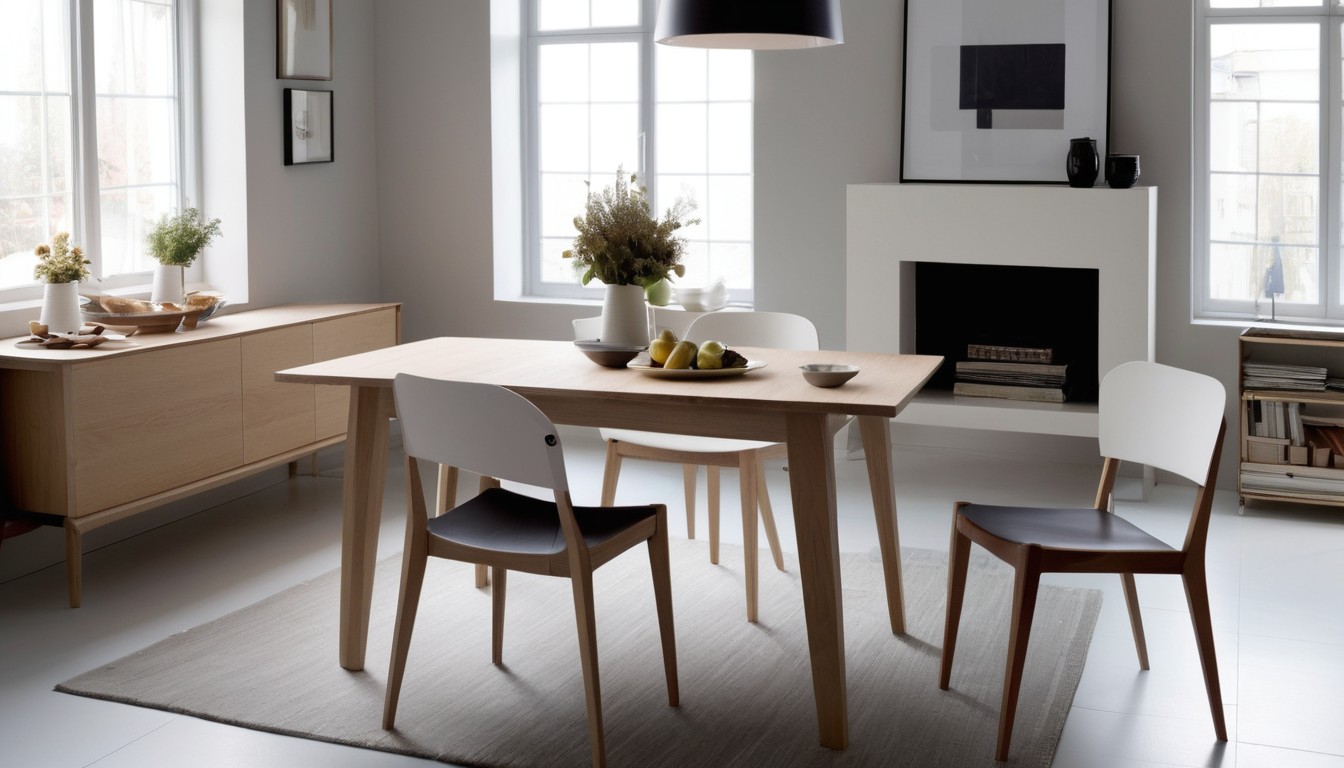
Combine Dining with Entertainment
Combining dining with entertainment elements can greatly enhance the functionality and appeal of your space, especially when hosting guests. Integrating a bar cart or console table near the dining area is a smart way to achieve this. Such a setup not only adds a touch of elegance but also increases convenience during gatherings.
A bar cart, for example, provides a mobile solution where drinks and refreshments can be kept ready and accessible. This allows guests to help themselves without interrupting the flow of conversation or the dining experience. It’s also a versatile piece that can be stocked with a variety of beverages, glassware, and even small snacks, making it perfect for any occasion.
Adding a console table can serve multiple purposes: it can be a place to display decorative items, hold additional food and drinks during large gatherings, or even act as a secondary dining area if space is tight. This helps in maintaining a smooth flow of movement and interaction among guests, ensuring that everyone feels connected without crowding the main dining table.
Such additions not only make the dining area more functional for social interactions but also help define it as a separate yet connected zone, ideal for both formal and casual gatherings. This strategic placement fosters a welcoming atmosphere that encourages guests to mingle and enjoy their time.
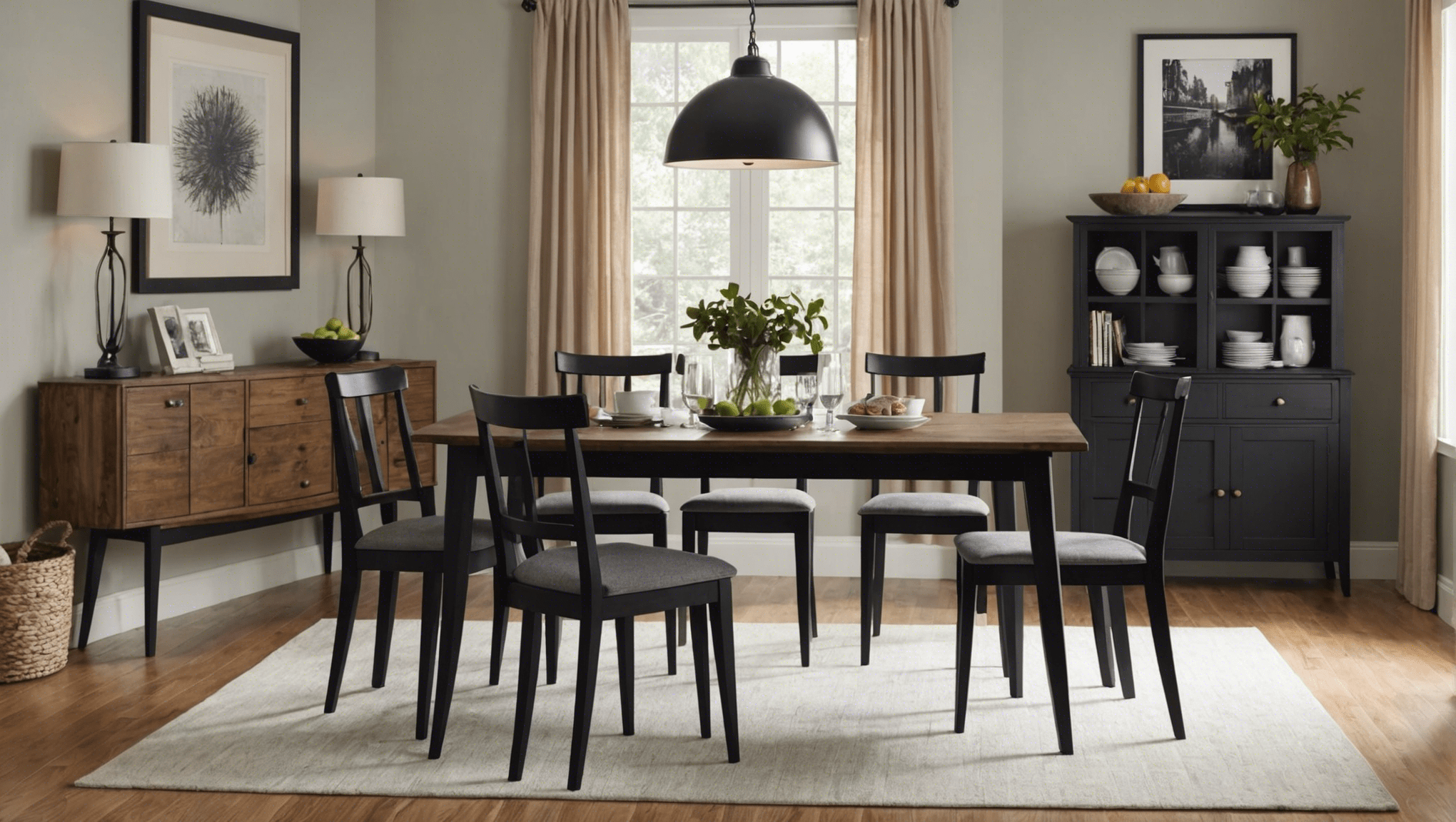
Complement Existing Decor
Selecting dining furniture that complements the existing decor of your living room is essential for creating a cohesive and harmonious interior. When the dining table and chairs echo the style and color scheme of the living room furniture, it helps unify the space, making the transition between areas feel seamless.
For instance, if your living room features modern decor, opting for a dining table and chairs that also embody modern aesthetics can enhance the overall design. A dark, minimalist table can serve as a strong, understated focal point, while sculptural chairs add an artistic element that draws the eye. This combination not only aligns with the sleek and contemporary vibe of a modern living room but also adds to its elegance and sophistication.
By carefully choosing dining furniture that fits the style of your living room, you not only ensure visual continuity but also reinforce the stylistic theme of your home. This thoughtful integration of design elements across different areas makes the space more inviting and aesthetically pleasing.
Efficiently Utilize Small Spaces
Efficiently utilizing small spaces, particularly in tiny apartments or homes, is crucial for maintaining both functionality and aesthetics. A petite bistro table is an excellent choice for creating an intimate dining spot that doesn’t overwhelm limited spaces. This smaller setup is not only space-saving but also versatile, making it perfect for quick meals, morning coffee, or a quiet evening dinner for two.
The compact size of a bistro table allows it to fit snugly in smaller areas such as a kitchen corner, against a window, or even on a small balcony. Its minimal footprint helps preserve the openness of the room, while still providing a practical dining solution. Additionally, choosing a table that complements the decor of your space can enhance its overall charm and make it feel like a deliberate part of the design rather than just a functional necessity.
For those living in small apartments, every square inch counts, and a bistro table maximizes this space efficiently. It offers a cozy and charming spot to enjoy meals without requiring the extensive space that traditional dining sets demand, making it an ideal choice for those keen on stylish, space-efficient furnishing solutions.
Design a Versatile Work and Dine Area
Designing a versatile area in your home that serves both as a dining space and a workspace is a smart and practical solution, especially in smaller living environments or for those looking to maximize their home’s functionality. To achieve this dual-purpose setup effectively, careful consideration of the layout and the furnishings is essential.
First, choose a dining table that is both comfortable for eating and suitable for working. This means selecting a table with adequate surface area to accommodate meals, laptops, and work materials. The height of the table should also be conducive to extended periods of sitting that work might require.
Positioning the table in a part of the room that minimizes distractions is crucial. This could be a quieter corner of the room, away from high traffic areas or noisy appliances. Having natural light can enhance focus and reduce eye strain, so placing the table near a window is beneficial. However, ensure that it does not conflict with screen visibility if used as a workspace.
To keep the space uncluttered, provide storage solutions such as drawers or nearby shelves where work materials can be easily stored when not in use. This helps maintain the area’s functionality for dining without the distraction of work-related clutter.
Adding a task light, such as an adjustable desk lamp, is a practical addition that enhances the functionality of the space. This allows for better lighting during work tasks, which is essential especially in the evenings or in dimly lit rooms.
By integrating these elements, the dining area can seamlessly transition into a work area, providing a practical and comfortable environment for both activities. This not only maximizes the use of space but also enhances the overall utility and appeal of your living area.
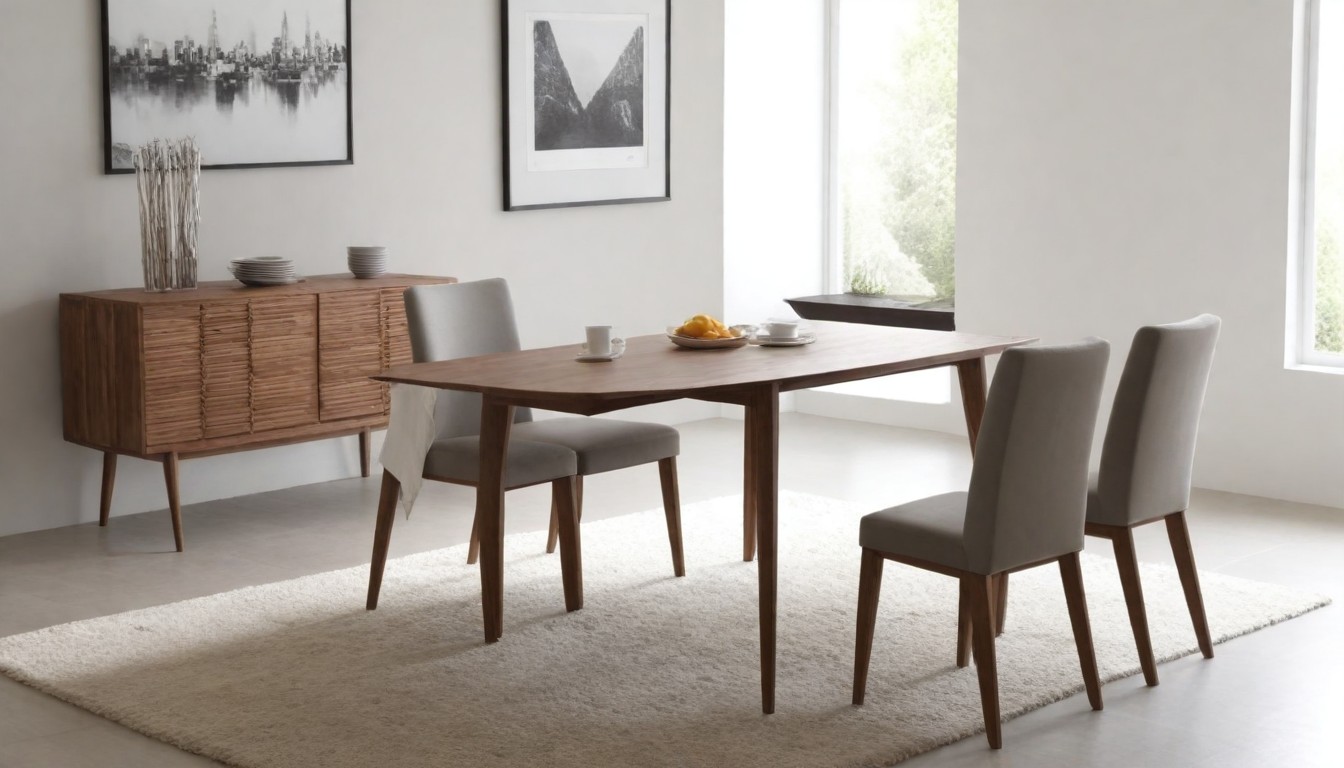
Enhance with Chic Accessories
Enhancing your dining table with chic accessories is an excellent way to elevate the aesthetic appeal and integrate it into the overall decor of your living space. Stylish and thoughtfully chosen accessories can add a layer of sophistication and personality to your dining area, making it not just functional but also a focal point of your living room.
Brass candle holders are a timeless choice that can add a warm, ambient glow to your dining space. They come in various designs—from sleek and modern to more ornate styles—allowing you to choose ones that best match your existing decor. Placing these on your table not only creates a cozy atmosphere during meals but also serves as a decorative element that reflects elegance and style.
Adding a striking vase as a centerpiece is another way to bring personality to your dining table. Whether filled with fresh flowers, dried arrangements, or even left empty, a unique vase can be a statement piece that draws attention. Choose a vase that complements the color scheme and style of your room to create a cohesive look.
These decorative elements do more than just beautify the table; they help tie the dining area into the living room’s overall theme, creating a seamless transition between spaces. The choice of such accessories should reflect the tones and textures present in the room, ensuring that the dining area feels like an integral part of your home, both in function and in style.
Expand Seating Options
Expanding seating options without consuming too much space is a common challenge in smaller living areas, but a well-chosen dining table can offer a practical solution. A round table is particularly effective for this purpose. Its circular shape naturally facilitates a more compact and efficient use of space, allowing more chairs to be placed around it compared to square or rectangular tables.
The round design eliminates sharp corners, making movement around the table easier and safer, which is especially beneficial in tight spaces. This shape also fosters a more intimate dining experience, as everyone is evenly spaced and faces toward the center, enhancing conversation and interaction among guests.
For those who enjoy entertaining, a round table can be incredibly versatile. It can comfortably accommodate a small group of guests without the table feeling overcrowded. Moreover, round tables often come with the option to extend, such as with a leaf insert, which can increase the seating capacity when needed and then be removed for everyday use to conserve space.
Choosing a round table for a dining area in a small living space not only maximizes the seating but also enhances the functionality and social dynamics of entertaining, making it an ideal choice for those who frequently host dinners and gatherings.
Strategic Furniture Placement
Strategic furniture placement can effectively maximize space and define different areas within an open floor plan or a small living space, all without compromising the openness and social dynamics of the room. Positioning a dining table behind a couch is a particularly smart and stylish way to achieve this separation between the dining and living areas.
This layout serves multiple purposes: it clearly demarcates the dining area from the living room, creating a distinct space for eating without the need for physical partitions, which can make a small space feel cramped or segmented. By using the back of the couch as a subtle divider, the room maintains a flow that is both open and organized.
Moreover, this arrangement enhances the social atmosphere of the space. People seated on the couch can easily interact with others at the dining table, making it ideal for entertaining guests or for families who want to keep engaged with each other across different activities. This setup allows for a seamless transition between relaxing and dining, ensuring that the space remains versatile and functional.
Additionally, the visual line created by the back of the couch helps to guide the eye through the space, making the area appear larger and more open. This is particularly beneficial in smaller living spaces where maintaining a sense of spaciousness is crucial. By thoughtfully arranging the furniture, you can create a living environment that is both practical for everyday use and conducive to social gatherings.
Stylish and Practical Accessory Integration
Incorporating a credenza in your dining area is a stylish and practical way to add both storage and aesthetic appeal. A credenza, typically a low cabinet or sideboard, offers ample space for storing items like linens, cutlery, and serving dishes, which can help keep your dining area tidy and organized.
Beyond its storage capabilities, a credenza provides a surface for decorative display that can greatly enhance the personalization of your space. Styling the top of the credenza with items that reflect your personal taste transforms it from mere furniture into a showcase of your style. For example, arranging books, artwork, and decorative objects like vases, sculptures, or framed photos can create a visually appealing display that reflects your interests and personality.
This integration of functionality with personal style not only makes the dining area more efficient but also more inviting. It ties the room together, creating a cohesive look that complements the rest of your decor. Additionally, the credenza can serve as a focal point during gatherings, where displayed items can serve as conversation starters or contribute to the ambiance of the space.
Overall, a credenza in the dining area is a smart choice for those looking to maximize their space’s utility while also adding a layer of personal flair and sophistication.
Utilize Open Floor Plans Effectively
Utilizing an open floor plan effectively requires strategic placement of furniture to define and separate areas without the use of walls or physical barriers. Placing a dining table strategically within an open space can serve several key roles in achieving a functional and aesthetically pleasing layout.
When positioned as a transitional element between the kitchen and the living room, the dining table not only provides a practical dining area but also acts as a natural divider between these two zones. This placement helps to maintain an open feel while clearly delineating where the kitchen ends and the living area begins, enhancing the flow of the space.
To create a cohesive look throughout the space, it’s important to consider the style and materials of the dining table in relation to the surrounding areas. For example, a table that echoes the colors and materials of the kitchen cabinetry and the living room furniture can tie the space together visually. This can be complemented by matching or coordinating chairs and decor elements such as area rugs and lighting fixtures.
Additionally, the visibility and accessibility from both the kitchen and living room make the dining area a central hub of activity, ideal for social interactions and gatherings. This setup encourages a seamless transition for those cooking in the kitchen to interact with guests or family members seated at the dining table, thereby enhancing the social dynamics of the space.
Overall, a dining table in an open floor plan not only serves functional dining needs but also contributes significantly to the organization and aesthetic integration of the home, making it a pivotal piece in the layout.

